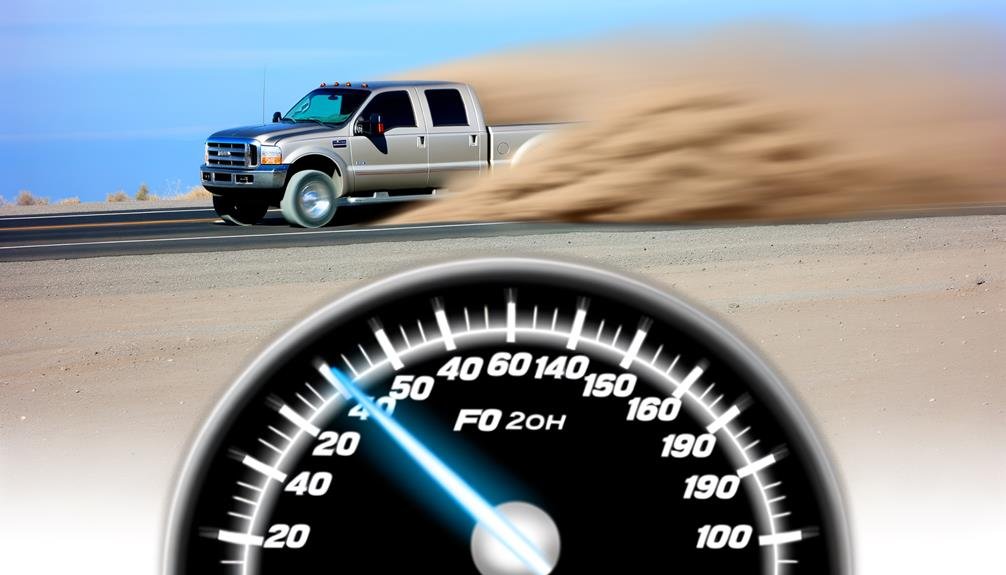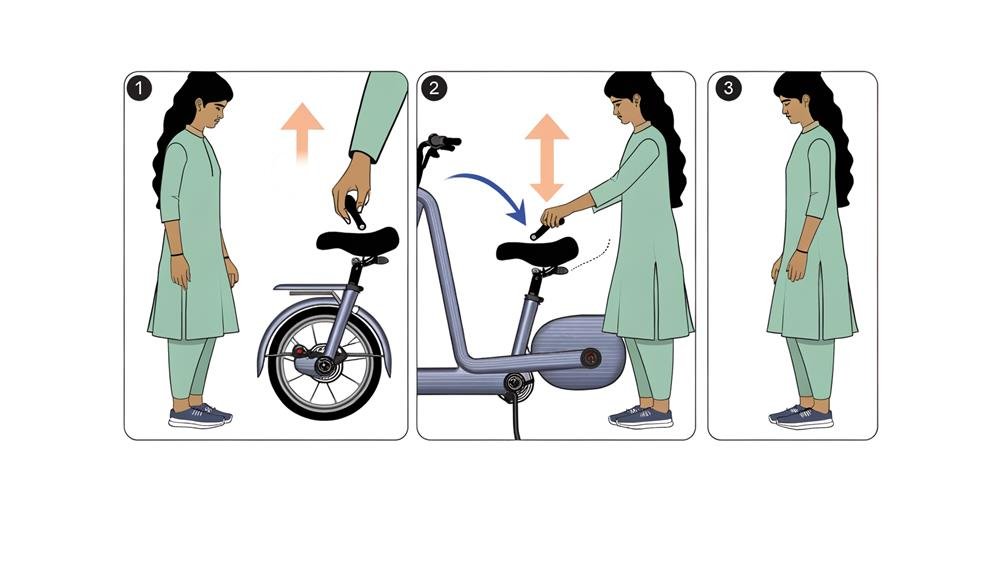Charles Miller is a veteran bike enthusiast with over 12 years of experience dealing with bikes as a mechanic. Despite immense love and expertise for...
Did you know that approximately 40% of e-bike accidents are reportedly due to improper braking techniques?
As we've noticed an increasing trend of electric bikes on the road, it's crucial for us to understand how to properly stop them. Unlike stopping traditional bikes, there's a specific technique to halt e-bikes safely and effectively.
We must take into account the additional weight, speed capabilities, and unique mechanics of these bikes. But what exactly is the right technique, and why is it so critical?
Let's explore further and shed some light on this important matter.
Key Takeaways
- Understanding the braking system on an electric bike is crucial for safe and effective stopping.
- Different types of brakes, such as rim brakes and disc brakes, have their own advantages and maintenance considerations.
- Practice the correct order of brake engagement and familiarize yourself with the biking surface for improved braking skills.
- Regular maintenance, including bleeding the brake system, cleaning brake pads and rotor, and inspecting and replacing brake pads, is essential for optimal braking performance and safety.
Understanding Electric Bike Mechanics
To fully grasp how to stop an electric bike, we first need to understand the mechanics of e-bike brakes, which function similarly to regular bike handbrakes. The right hand controls the rear brake and the left hand controls the front brake. In our quest to brake with an e-bike, it's crucial to use both brakes in sequence for an effective slowdown and eventual stop.
It's important to remember that e-bikes carry extra weight and travel at higher speeds, necessitating more time and distance for braking, especially in wet conditions. We can improve our braking skills by practicing the correct order of brake engagement, adjusting our seat for better balance, and familiarizing ourselves with the biking surface.
Understanding electric bike mechanics also involves knowing the right kind of brakes on your e-bike. Different types such as rim brakes and disc brakes each have their own advantages and maintenance considerations. For instance, a disc brake offers superior performance in wet conditions and requires less effort to activate compared to rim brakes. However, it may require more regular maintenance due to its complex mechanism. All these factors shape how we safely and effectively manage to stop our e-bikes.
Using the Right Braking Technique
Mastering the right braking technique is crucial for safe and effective e-bike operation. The electric bike, with its added weight and power, requires a specific approach to braking. It's not simply about slamming on the brakes, but rather, it's about using the right braking technique.
Firstly, apply the rear handbrake. This slows down the e-bike in a controlled manner. Next, engage the front handbrake to bring the bike to a complete stop. When it's time to move again, release the front handbrake first, then the rear. This ensures a smooth transition.
Let's highlight these steps in a table:
| Step | Action |
|---|---|
| 1 | Apply the rear handbrake |
| 2 | Engage the front handbrake |
| 3 | Release the front handbrake, then the rear |
The Role of Speed Control

In managing an electric bike's stoppage, we must acknowledge the pivotal role of speed control. By correctly engaging the brakes and understanding the e-bike's weight and speed, we can modulate deceleration effectively.
It's essential, then, to familiarize ourselves with these braking techniques and practice them in various scenarios for smooth, controlled stopping.
Understanding Speed Regulation
When we're discussing the speed regulation on an electric bike, it's important to know that it's governed by the speed control system, which adeptly adjusts the motor's power output to maintain a steady speed. This system employs sensors, controllers, and the bike's computer to monitor and adeptly tweak the motor's power output.
It's crucial for a safe and smooth ride as it prevents sudden acceleration or deceleration. Understanding speed regulation and the role of the front brake in this process is key to maximizing the performance and safety of the bike.
The brake lever, when used properly, prompts the system to decrease power output, ensuring efficient braking. So, by comprehending speed regulation, we're not only optimizing our ride but also fostering a sense of belonging in the e-bike community.
Effective Braking Techniques
Building on our understanding of speed regulation, let's now explore some effective braking techniques that take full advantage of the speed control system on an electric bike.
To stop an electric bike, gradually engage the right handbrake first. This initial action slows down the bike, allowing you to manage your speed.
Follow this up by gently applying the left handbrake, which brings the bike to a full stop.
Release the brakes in the opposite order for smooth and controlled braking.
Importance of Regular Maintenance
We can't stress enough the importance of regular maintenance for your electric bike, especially when it comes to ensuring that the brakes are in optimal working condition for reliable stopping power. Regular maintenance isn't just about preserving your bike's performance, but it's also about your safety.
By conducting routine checks, potential issues can be detected and rectified early, preventing failures that could hinder your ability to stop effectively. The braking system, being a critical safety component, should always function effectively to ensure a safe ride.
Furthermore, regular maintenance extends the lifespan of the braking components, saving you the trouble and cost of frequent replacements. With proper care, your bike's braking performance remains consistent, providing a smooth and predictable riding experience.
In addition, regular maintenance enhances your bike's overall performance. A well-maintained electric bike not only stops efficiently but also rides better. This provides peace of mind, knowing that your bike is in optimal condition, ready to stop whenever needed.
Safety Measures While Braking

We're now turning our attention to the critical safety measures while braking on an electric bike. Understanding the mechanics of brakes and mastering proper braking techniques are key to safe riding.
Let's explore how applying both brakes in order, the effect of an e-bike's weight on braking distance, and the importance of regular brake service contribute to effective braking.
Understanding Brake Mechanics
To safely stop an electric bike, it's crucial to understand the brake mechanics and adhere to certain safety measures. This understanding can help ensure a safer ride for us all, particularly given the increased weight and speed of e-bikes.
We've highlighted three key points for braking:
- Each handbrake controls a different brake – the right handbrake controls the rear brake, while the left controls the front. Use both for effective braking.
- Develop a habit of using the right handbrake first, then the left. This sequence is essential for the brake mechanics and stability.
- Brake pads wear out over time. Regularly check and replace them to maintain optimal stopping power.
Proper Braking Techniques
Having grasped the brake mechanics, let's now focus on proper braking techniques, which are vital safety measures when stopping an electric bike. Engage the right handbrake first to initiate slowing down, then apply the left handbrake to come to a complete halt. This sequential braking avoids any sudden jolts. Remember, always release the front wheel brake first, followed by the right one, for a smoother stop.
Given the extra weight of e-bikes, brake sooner than you normally would. Be cautious not to accidentally engage the throttle while braking. Practice these techniques in a safe, quiet area.
Further, lowering the seat can enhance balance during braking, especially in emergency situations. Remember, the brake disc's effectiveness lies in your ability to use them correctly.
Troubleshooting Common Brake Issues
When it comes to troubleshooting common brake issues on an electric bike, you'll often encounter problems like spongy or loose brakes, noisy brakes, weak brakes, brakes that drag, or brakes that vibrate. It's important to handle these issues promptly for a safe ride.
If your brakes feel spongy or loose, it could be due to air bubbles in the brake lines. To address this, we'd suggest bleeding the brake system.
Noisy brakes can be an irritation. Often, the cause is dirt or misalignment. Cleaning the brake pads and rotor, and adjusting the alignment of the brake pads should fix this.
If your brakes feel weak or don't stop the electric bike effectively, the brake pads might be worn out. Inspecting the brake pads for wear and replacing them if necessary can resolve this issue.
The center of gravity also plays a crucial role in braking. Understanding and adjusting it can enhance your bike's braking efficiency.
Frequently Asked Questions
How Do You Stop on an Ebike?
To stop an e-bike, we use proper braking techniques. We engage the rear brake first, then the front for safety. Regular e-bike maintenance is key. In emergencies, we've mastered quick, safe stops. Practice is crucial.
Can You Turn off an Electric Bike?
We can indeed switch off an electric bike. Ebike shutdown methods involve using electric bike controls, power cut mechanisms, and manual override systems. Always remember, every bike has its unique 'off' button.
Can You Stop Pedaling on an Electric Bike?
Yes, we can stop pedaling on an electric bike. Understanding pedaling mechanics and bike control increases energy efficiency. Mastering these riding techniques lets us enjoy the ride while feeling part of the e-bike community.
Do Ebikes Turn off Automatically?
"We're often asked, 'do ebikes turn off automatically?' Generally, they don't. Manual power down is needed, ensuring both battery lifespan and safety features. Some may have auto shutdown for power management, but it's not standard."
Conclusion
In conclusion, mastering the art of stopping an e-bike is crucial for a safe ride. Don't let the heavier weight intimidate you, with practice, you'll adapt.
Visualize it as a two-step process: engage the rear handbrake, then the front.
Regular maintenance can't be overlooked, it ensures your brakes are always in top shape.
Don't forget, control your speed and be wary of the conditions you're riding in.
With these points in mind, you're set for a smooth, safe stop.

Charles Miller is a veteran bike enthusiast with over 12 years of experience dealing with bikes as a mechanic. Despite immense love and expertise for his Tacoma, he rides his Trek Ebike more. Anytime you meet him, you’ll either hear him talking about Bikes, or writing about all things bikes and cars on this blog.
More Posts


